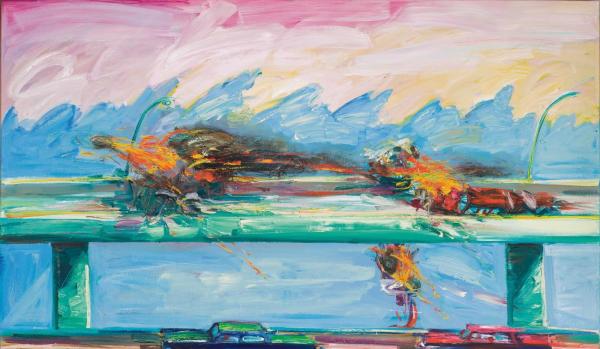As LACMA prepares for the 2026 public opening of the new David Geffen Galleries, the future home of the museum’s permanent collection spanning a breadth of eras and cultures, we’re sharing 50 iconic artworks that will be on view in the building over the next 50 weeks in the series 50 Works 50 Weeks.
Carlos Almaraz is recognized among the first of many self-identified Chicano artists whose artistic, cultural, and political motivations catalyzed a new art movement in the 1970s. He was legendary during his lifetime, initially as a political activist and a cofounder of Los Four—the first of numerous Chicano artist collectives to spring up just as Southern California was emerging as an international focal point for new art—and ultimately as a visionary studio artist whose compelling images convey a deep psychological impact.
Almaraz first became an activist through his work with the United Farm Workers, painting banners for union rallies. Among his most visible works from this period were a number of public murals in East Los Angeles (only a few of which survive today) depicting the Chicano civil rights struggle. By the end of the decade, however, Almaraz felt constrained by his role as a cultural worker within the movement and turned his creative aspirations to asserting a far more personal form of expression, which today constitutes his widely acclaimed artistic legacy. As his work evolved it became ever more psychological, dreamlike, and mystical, as revealed through a set of themes to which he often returned throughout his mature career.
Just as natural beauty and the visually stunning urban energy of Los Angeles are hallmarks of Almaraz’s work, so too are his many depictions of danger, disaster, and mortality. He is perhaps best known for his series of fiery car crashes—scenes of colliding automobiles, car explosions, and vehicles careening over the guardrails of elevated Southern California freeways. In Crash in Phthalo Green (1984), abstracted yet kinetic forms in his canvas depict a spectacular high-speed fiery car crash on a Los Angeles freeway under a seductively radiant California sky. In this iconic image of car culture in Southern California, Almaraz probes the unsettling psychology of the innate human fascination with images of catastrophe and violence.



